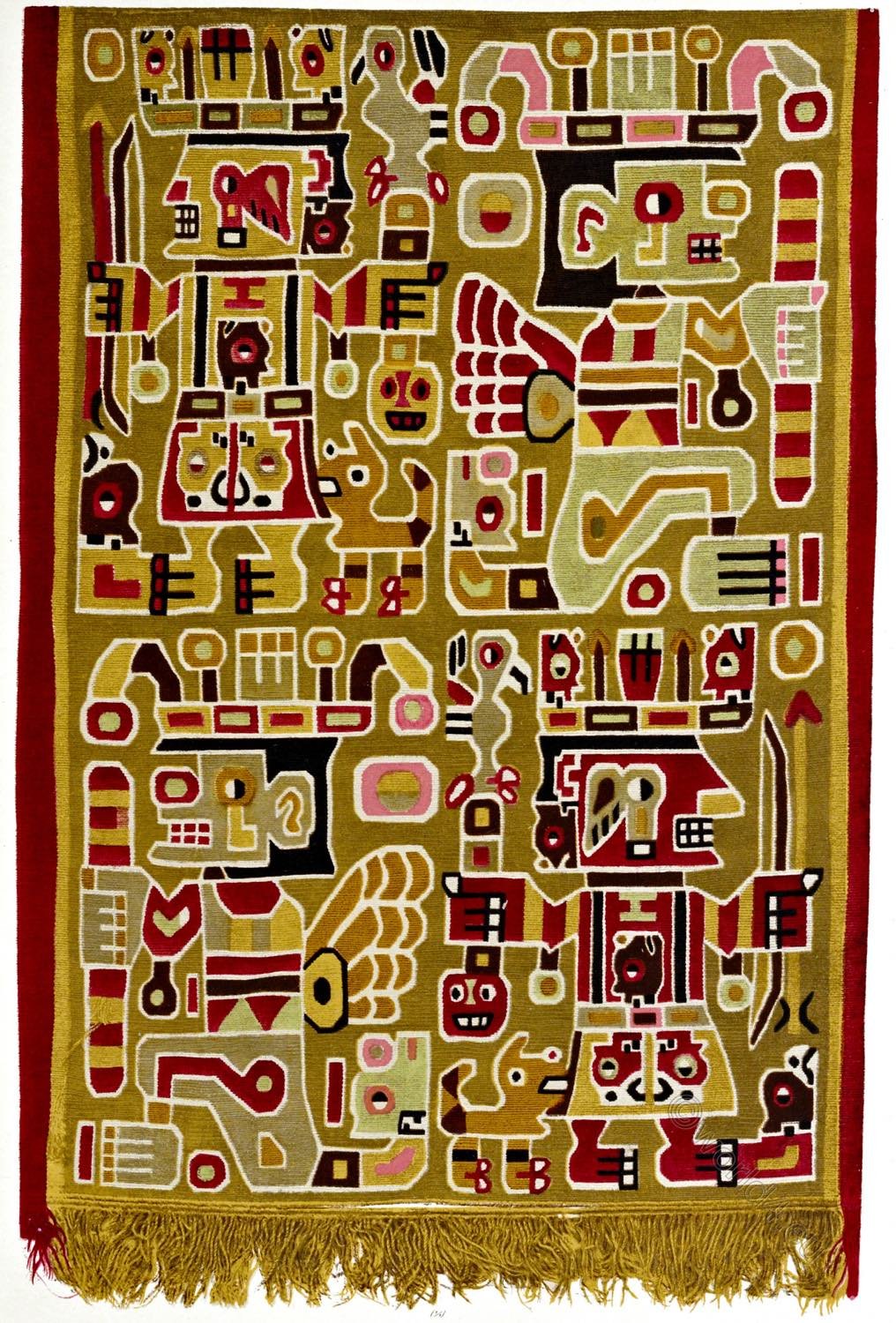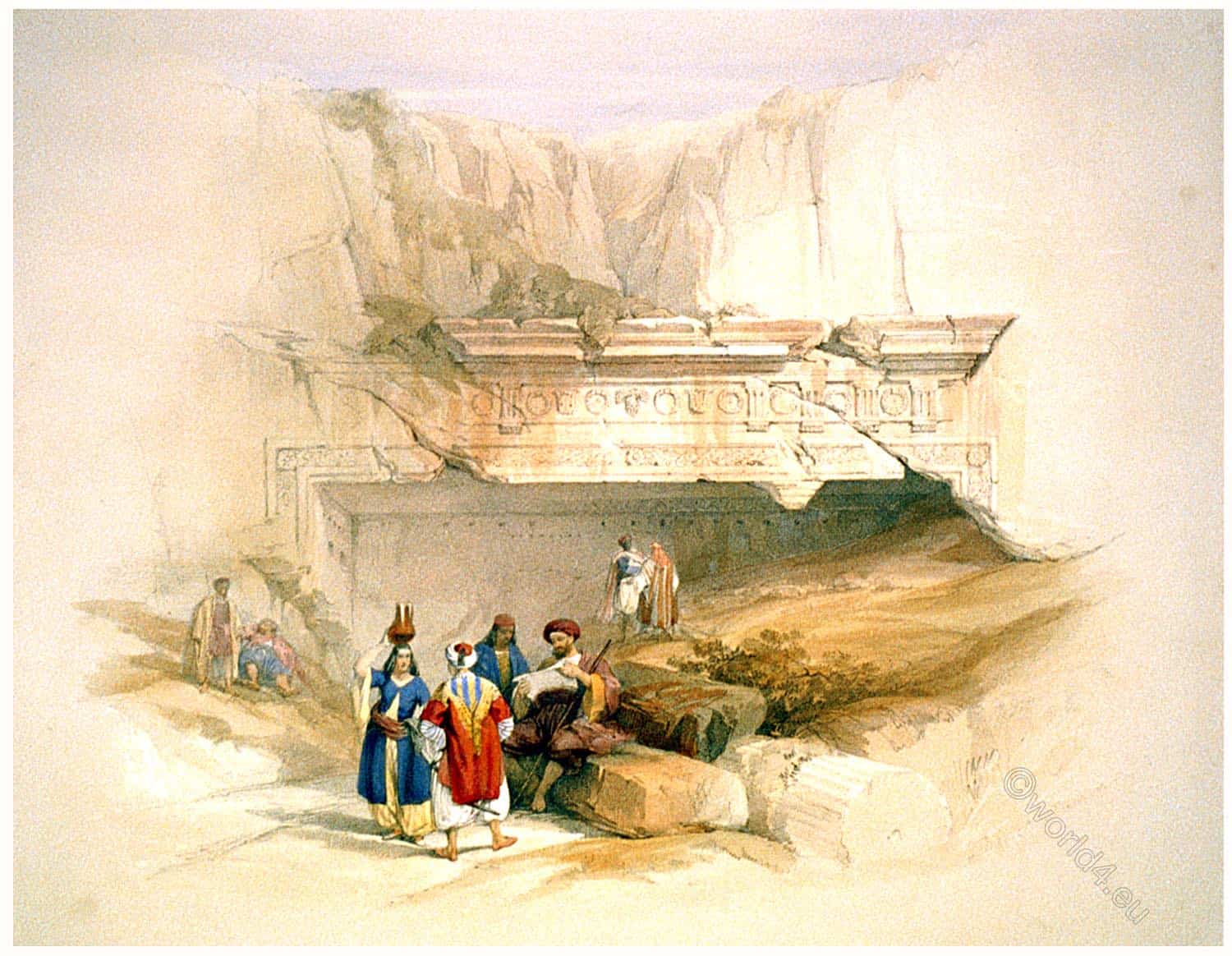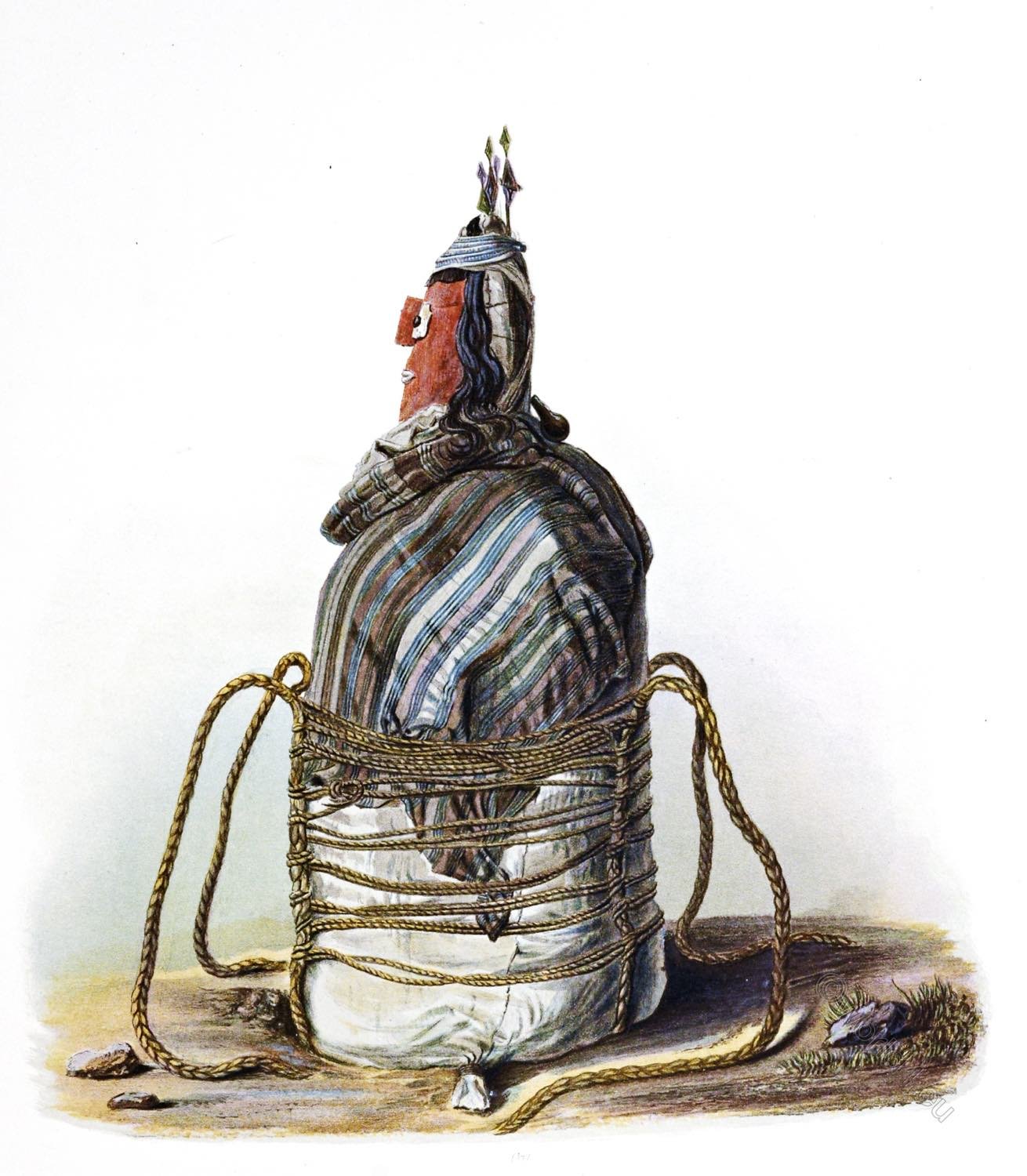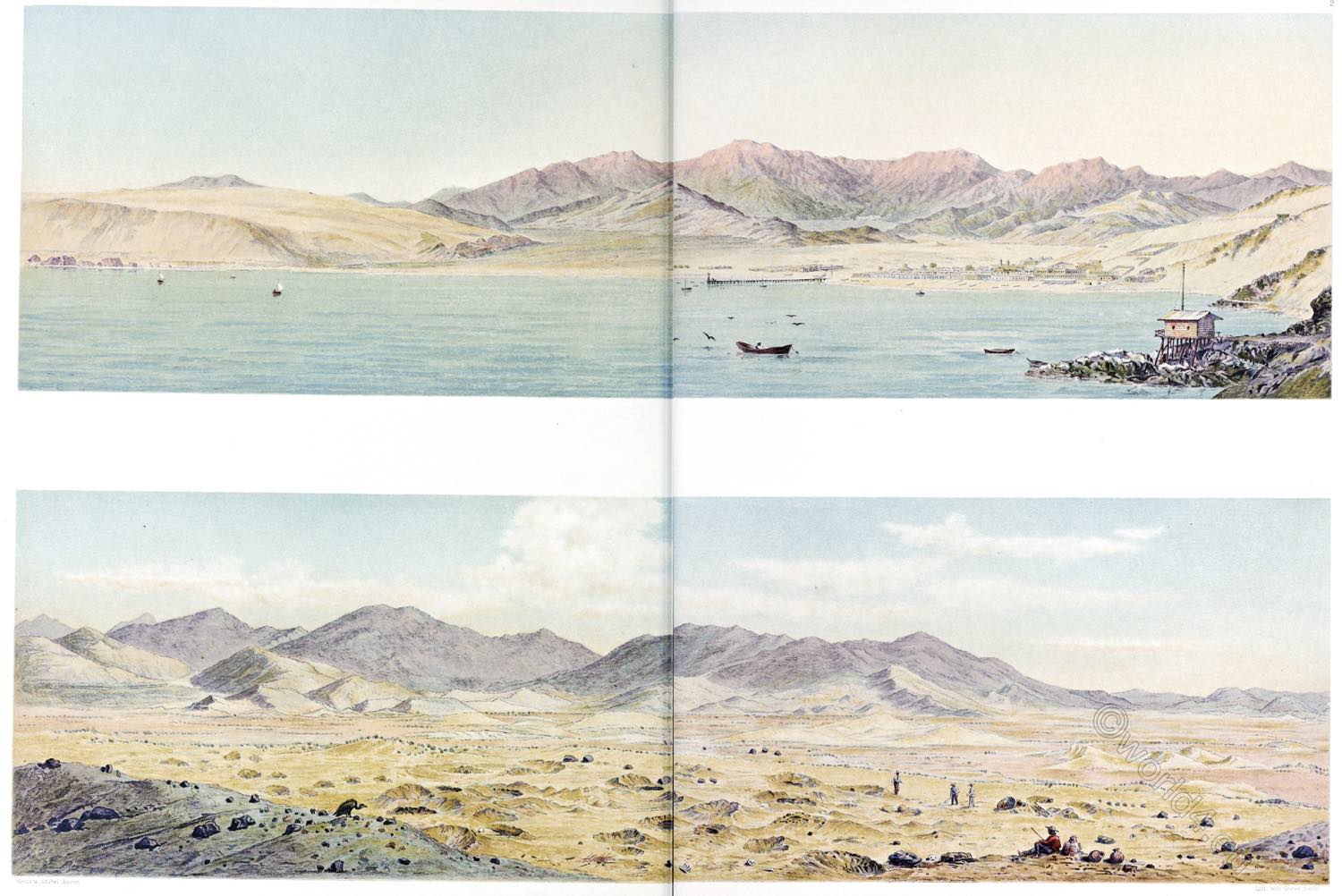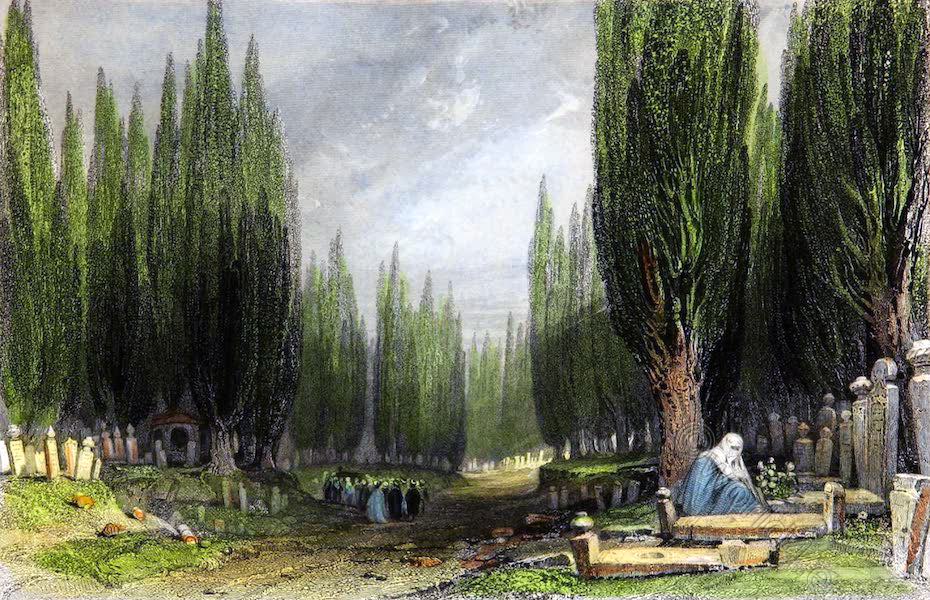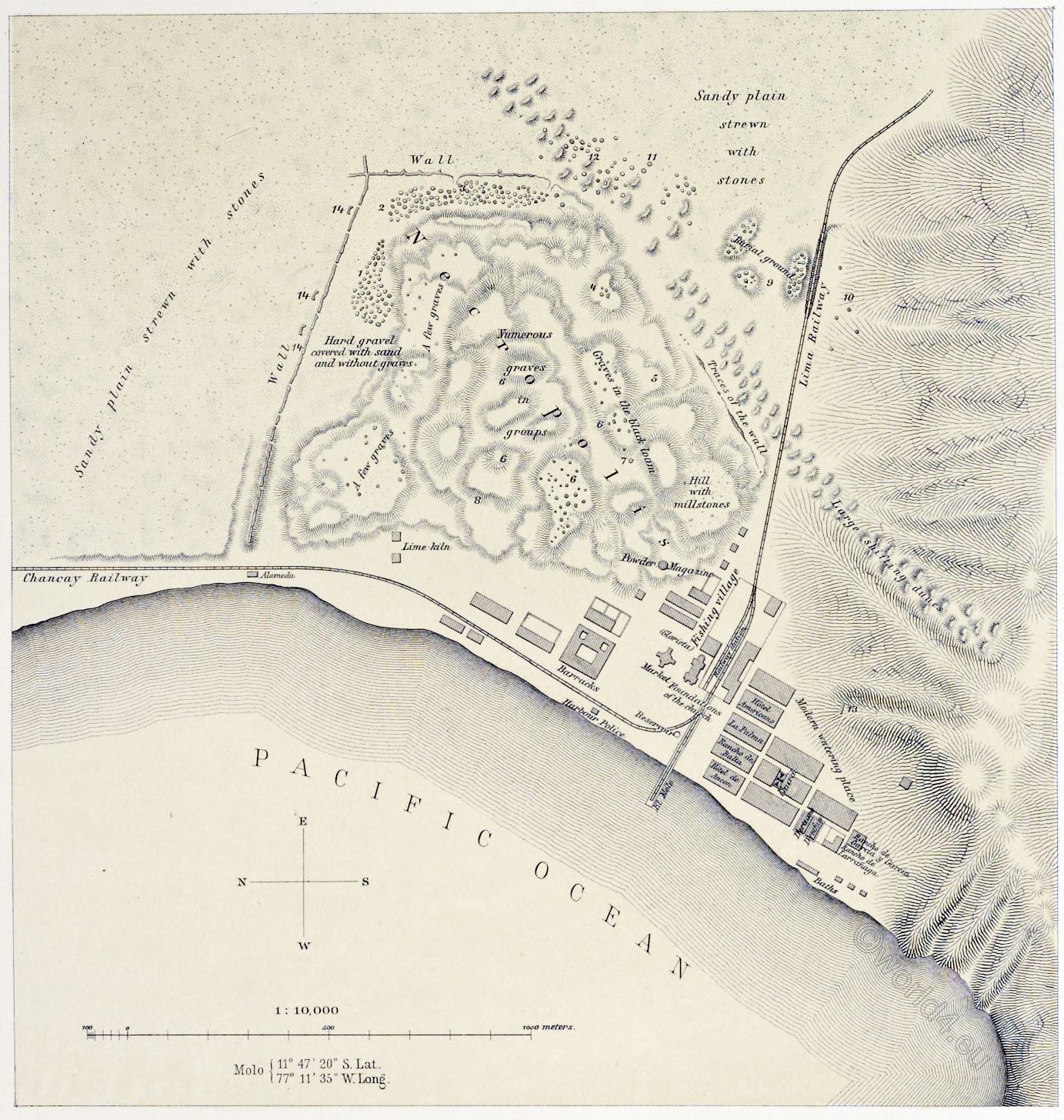
Explanation.
- Mummies frequently associated with pottery.
- Dogs and Llamas often occurring as parting gifts in the graves.
- Mummies mostly richly equipped; Mummies with false heads.
- Shallow grave with four Mummies, dogs often accompanying them.
- Apparently without graves.
- Large Mummies in nets.
- Large Chicha earthenware vase.
- Graves opened sideways, passing for blocked up houses.
- Here rich dress materials were found.
- Shallow graves.
- Grave with 16 bodies.
- Grave faced with stone.
- Remains of walls.
- Remains of Houses?
PLATE 1.
PLAN OF ANCON AND NEIGHBOURING NECROPOLIS.
(1:10000.)
The plan illustrates the topographical relations in connection with the archaeological aim of this work. On the right of the observer the spur of a mountain range projects, skirting the Bay of Ancon southwards and sheltering it from the prevailing winds. North of this range there stretches a sandy and stony waste, whose surface is much diversified. Slight depressions and hollows are separated by flat ridges and low crests, while elsewhere, and especially near the coast, where the ground falls abruptly towards the flat, sandy beach, the land assumes the aspect of a plateau.
A fine drift sand, wafted from the neighbouring bay over a fall in the coast range, covers the flat surface, rising to a row of shifting dunes (médanos) in the direction of the wind. Thousands of graves, some isolated, some forming groups of various sizes, lie scattered over this arid tract, which in the utter absence of vegetation resembles an African desert. Such is the Necropolis of Ancon!
This grave-yard is bounded by a low wall, whose ruins cropping out above the sand, show that it evidently formed a sort of enclosure. In the space thus enclosed there may be distinguished a central hilly, and a circular level section. In the latter the graves are mostly crowded together. But interments were not confined to the burial-place proper, for graves isolated and in groups occur also beyond the limits of the enclosing wall.
Like the whole neighbourhood, including even the slopes of the higher mountains, the hills in the central section are strewn with sand. But they are so far distinguished that their upper layers consist of a black loam abounding in kitchen refuse, potsherds and other remains of human industry, all pointing at a protracted settlement at this spot. The mummies found in the black loam betray a certain uniformity of treatment, differing however in many respects from those occurring in the graves of the outer section, which are otherwise often of a richer description.
During the construction of the railway running from Lima by Ancon to Chancay the southern edge of the burial-ground was cut through, whereby a number of graves were exposed. The traditional belief in the fabulous wealth of Indian graves immediately excited the thirst for easily acquired affluence characteristic of the descendants of the Spaniards in South America, and occasion was thus given for a barbarous and indiscriminate rifling of the tombs.
At the foot of the above mentioned sandy ridge, and close to the shore run the few streets, whose wooden houses (ranchos) form the modern watering-place founded by President Balta. Amongst the otherwise insignificant public buildings may be mentioned, in explanation of the plan, the railway station and a small wooden temple crowning a hill and used as a powder magazine. By the side of the new settlement there have been preserved the remains of an older Indian fishing village, consisting of a number of wretched hovels and cabins, run up in the square spaces indicated behind the railway station. Lastly about a kilo- metre to the north-east of the bathing place a spot is marked as an Alameda or public promenade, on whose sandy soil a vain attempt has been made to grow a few eucalyptus trees.
Source: The necropolis of Ancon in Peru: a contribution to our knowledge of the culture and industries of the empire of the Incas being the results of excavations made on the spot by Wilhelm Reiss (1838-1908); Alphons Stübel (1835-1904), joint author; Wilhelm Greve, lithographer; Augustus Henry Keane (1833-1912), translator; Ludwig Wittmack (1839-1929); Rudolf Virchow (1821-1902); Alfred Nehring (1845-1904). Berlin: A. Asher & Co.; New York : Sole agent for America, Dodd, Mead & Company, 755 Broadway, 1880.
Continuing
I. The Necropolis and Neighbourhood.
Discover more from World4 Costume Culture History
Subscribe to get the latest posts sent to your email.


